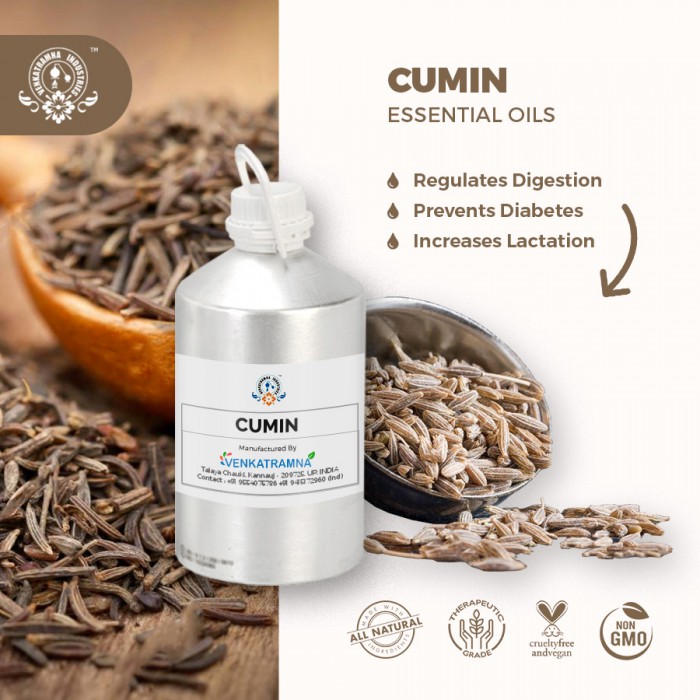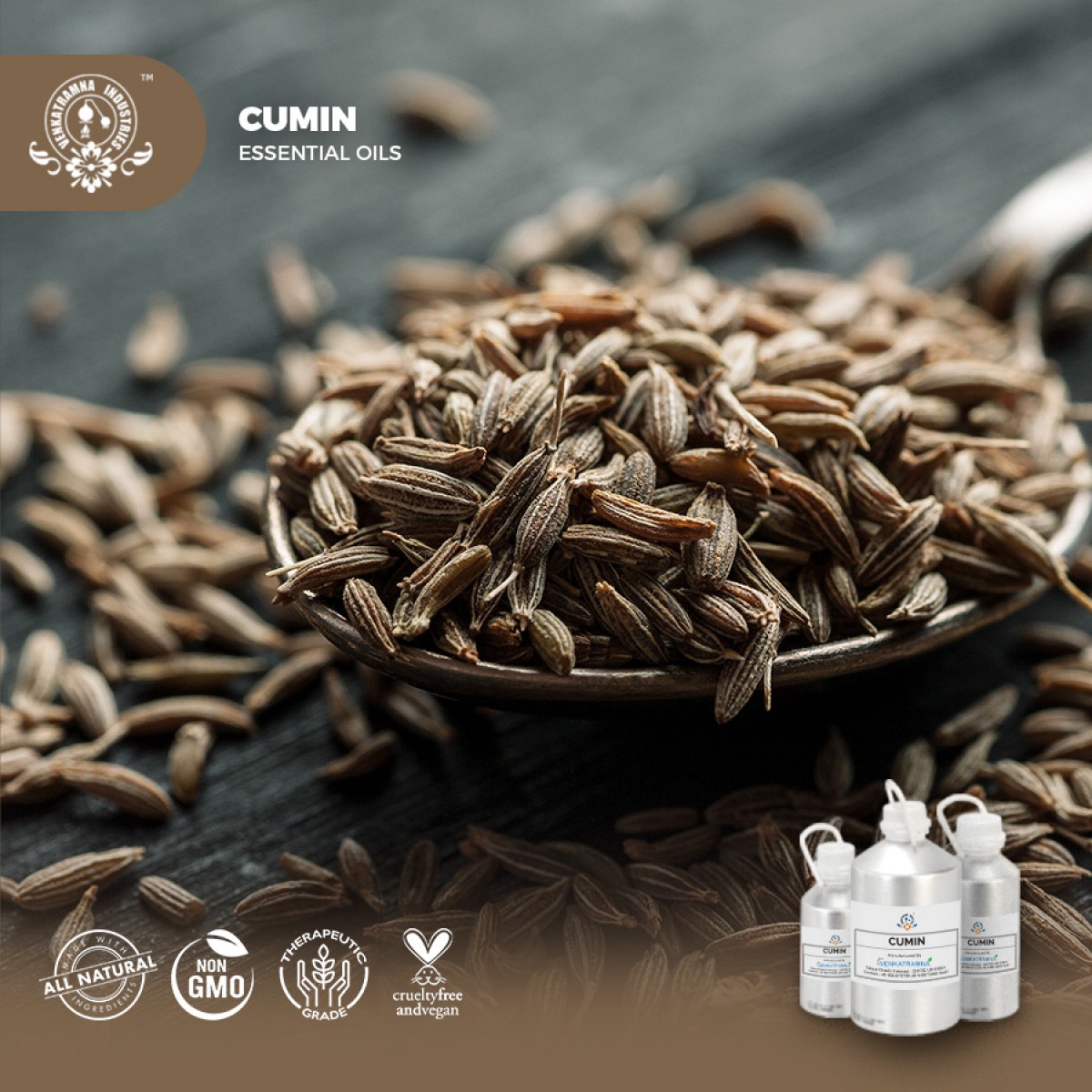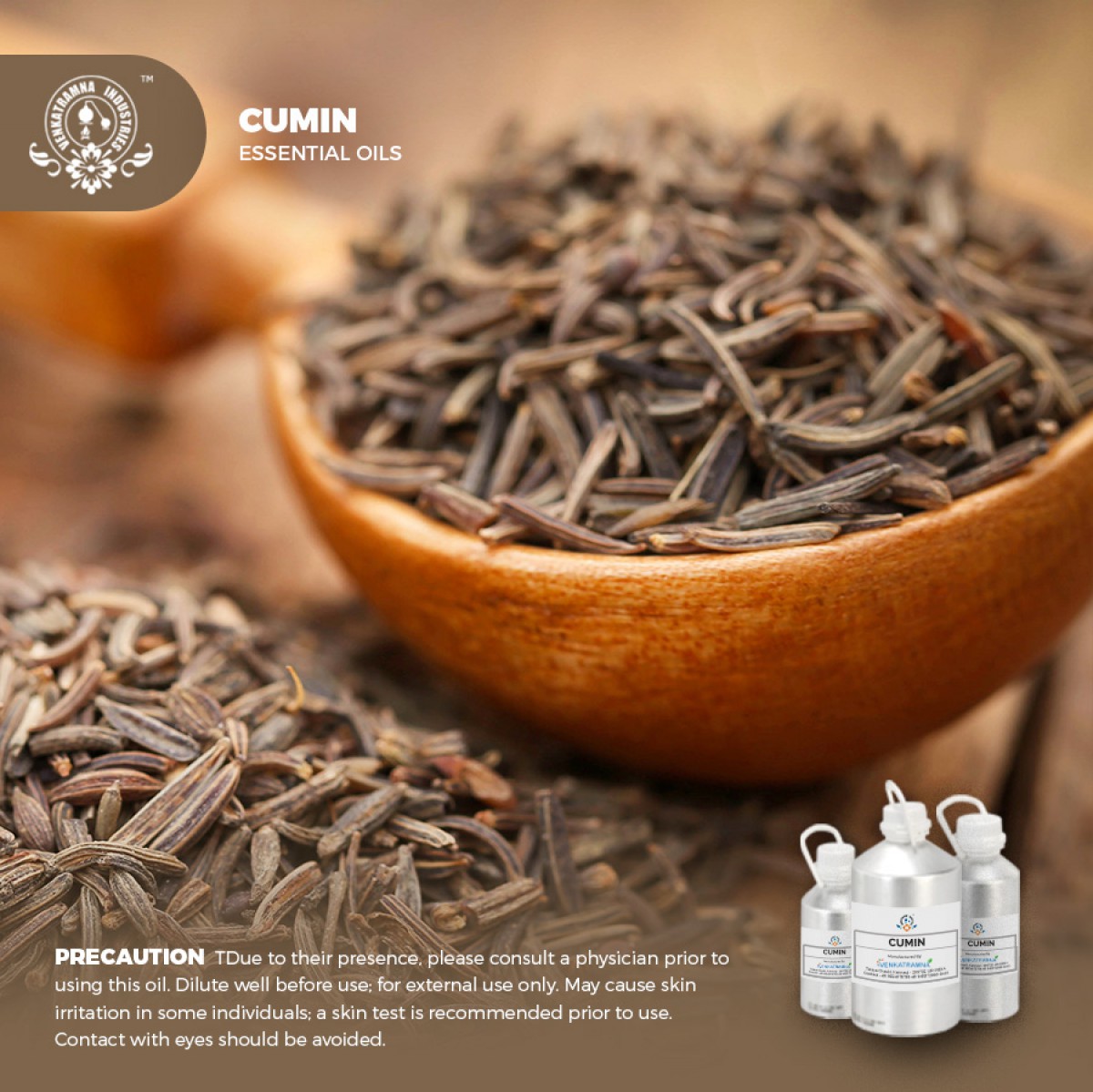Botanical Name: Cuminum cyminum L. Common name: Jeera, Cumin, Plan Read More
|
Botanical
Name: |
Cuminum cyminum L. |
|
Common name: |
Jeera, Cumin, |
|
Plant family: |
Apiaceae |
|
Genus: |
Cuminum |
|
Appearance/Color: |
A thin, pale yellow-greenish to brownish liquid. |
|
Odor: |
A middle note with a medium strength of aroma, it has a
characteristic warm, spicy and musky scent. |
|
Blends With: |
Angelica Root, Caraway, Lavender, Rosemary, Chamomile,
and essential oils with an oriental flavor. |
|
Origin: |
India |
Spices are an important bio-nutrients
for both food ingredients and nutritional supplements. From ancient times,
spices have been used as food additives to enhance the taste and be flavor of
food. Apart from these uses, spices also have numerous medicinal properties and
used to treat several disorders that form an important part of the Ayurvedic
Pharmacopoeia (Indian System of Medicine). Spices have increasingly larger role
to play in Indian recipes as the bactericidal, bacteriostatic, fungistatic,
antifertility, anti-helminthic and other medicinal properties and also believed
to aid digestion. In the traditional Indian system of medicine, more than a few
spices and herbs have hold and possess several medicinal properties such as
antithrombotic, anti-atherosclerotic, hypolipidemic, anti-inflammatory,
anti-aggregatory, eicosanoid inhibitor.1 Cumin is popular as culinary spice and
used in folklore therapy because the presence of aromatic substances in the
herb. Cumin comes under the category of traditional spice from middle ages. It
was too much popular, because of its peppery flavor. During the middle ages in
Europe, cumin became as an icon of love and fidelity and also some people wants
to carry cumin in their pockets to give in wedding ceremonies. Cumin is a small
hairy, brownish in color, boat shaped seed plant that have a spicy sweet aroma
property and powerful slightly bitter and pungent flavor.
Cumin seeds are obtained from the herb Cuminum cyminum, native from East Mediterranean to South Asia belonging to the family Apiaceae—a member of the parsley family. Cumin seeds are oblong and yellow–grey. Cumin seeds are liberally used in several cuisines of many different food cultures since ancient times, in both whole and ground forms. In India, cumin seeds have been used for thousands of years as a traditional ingredient of innumerable dishes including kormas and soups and also form an ingredient of several other spice blends. Besides food use, it has also many applications in traditional medicine. In the Ayurvedic system of medicine in India, cumin seeds have immense medicinal value, particularly for digestive disorders. They are used in chronic diarrhea and dyspepsia.
DISCLAIMER
The complete range of conditions
or methods of use are beyond our control therefore we do not assume any
responsibility and expressly disclaim any liability for any use of this
product. Information contained herein is believed to be true and accurate however,
all statements or suggestions are made without warranty, expressed or implied,
regarding accuracy of the information, the hazards connected with the use of
the material or the results to be obtained from the use thereof. Compliance
with all applicable federal, state, and local laws and local regulations
remains the responsibility of the user.
The FDA has not evaluated the
statements on this website. No claims are made by Venkatramna Industries as to
the medicinal value of any products from vriaroma.com or by us. The information
presented here is for educating our customers about the traditional uses of
essential oils and is not intended to diagnose, treat, cure, or prevent any
disease. You are responsible for understanding the safe application of these products.
If you have any questions, please call or email us for further information.
As per NAHA guidelines, New Directions Aromatics
(NDA) does not recommend the ingestion of essential oils. It is imperative to
consult a medical practitioner before using Essential Oils for therapeutic
purposes. Pregnant and nursing women and those taking prescription drugs are
especially advised not to use this product without the medical advice of a
physician. The oil should always be stored in an area that is inaccessible to
children, especially those under the age of 7.
Although the seeds of cumin
(Cuminum cyminum L.) are widely used as a spice for their distinctive
aroma, they are also commonly used in traditional medicine to treat a variety
of diseases including chronic diarrhoea and dyspepsia, acute gastritis, diabetes,
and cancer.
Cumin Oil in Pharma
Cumin seeds are nutritionally
rich; they provide high amounts of fat (especially monounsaturated fat),
protein, and dietary fibre. Vitamins B and E and several dietary minerals,
especially iron, are also considerable in cumin seeds. Cuminaldehyde, cymene,
and terpenoids are the major volatile components of cumin. Cumin has been used
as anti-inflammatory, diuretic, carminative, and antispasmodic, treatment of
toothaches and epilepsy and also as an aid for treating dyspepsia, jaundice,
diarrhea, flatulence, and indigestion. Cumin powder has been used as a poultice
and suppository and has been smoked in a pipe and taken orally.
Essence of Cumin Oil
Cumin has a distinctive strong
flavour. Its warm aroma is due to its essential oil content. Its main
constituent of aroma compounds are cuminaldehyde and cuminic alcohol. In
traditional medicines, cumin was a major component of curry and chili powder
that was used to flavor a variety of commercial food products. Cumin has also
been crushed and mixed with foods such as fish and meat, and the seeds
sprinkled on bread and cakes. The oil, derived by steam distillation, is used
to flavor alcoholic beverages, desserts, and condiments. It is also used as a
fragrant component of creams, lotions, and perfumes. . It is one of the popular
spices regularly used as a flavoring agent.
COMMON USAGE
·
Regulates digestion
·
Cures piles
·
Prevents diabetes
·
Treats asthma and bronchitis
·
Fights common cold
·
Increases lactation
·
Prevents anemia
·
Decreases cognitive disorders
·
Skin care
·
Boosts immunity
·
Prevents cancer
Ingredients:
|
S.No |
Key Constituents |
Strength (%) |
|
1 |
Cuminaldehyde |
19.8-40.0 |
|
2 |
g-terpinene |
11.2-32.0 |
|
3 |
b-pinene |
4.4-17.7 |
|
4 |
p-cymene |
5.9-17.5 |
|
5 |
p-mentha-1,3-dien-7-al |
7.2-3.2 |
|
6 |
p-mentha-1,4-dien-7-al |
2.1-8.6 |
|
7 |
b-myrcene p a-phellandrene |
0.5-7.3 |
|
8 |
p-menth-3-en |
0.5-2.5 |
|
9 |
Cuminyl alcohol |
0.2-2.2 |
|
10 |
a-pinene |
0.2-1.2 |
|
11 |
Isocaryophyllene |
0.1-1.1 |
TOXICOLOGICAL
INFORMATION
·
Hazards: Phototoxic (moderate risk).
·
Contraindications (dermal): If applied to
the skin at over maximum use level, skin must not be exposed to sunlight or
sunbed rays for 12 hours.
·
Maximum dermal use level 0.4%
Organ-specific
effects
·
Adverse skin reactions
Undiluted cumin oil
was moderately irritating to rabbits, but was not irritating to mice; tested at
4% on 25 volunteers it was neither irritating nor sensitizing. Distinct
phototoxic effects were reported for cumin oil, but none for cuminaldehyde.
RIFM apparently reported a 5% NOAEL for phototoxicity in human volunteers.
Systemic
effects
o Acute
toxicity: Cumin oil acute oral LD50 in rats 2.5 mL/kg; acute dermal LD50 in
rabbits 3.56 mL/kg.
o
Arcinogenic/ anticarcinogenic potential: Cumin
oil was not mutagenic in the Ames test, and did not produce CA in Chinese
hamster fibroblasts. Cumin oil dosedependently inhibited aflatoxin B1-induced
adducts in calf thymus DNA, in the presence of rat liver microsomes. It
increased glutathione S-transferase activity in the stomach, liver and
esophagus of mice by more than 78%, and significantly inhibited B[a]P-induced
squamous cell stomach carcinoma.
ECOLOGICAL INFORMATION
·
Toxicity: No additional data available.
·
Persistence & degradability: No additional
data available.
·
Bioaccumulation Potential: No additional data
available.
·
Mobility in soil: No additional data available.
·
Results of PBT and vPvB Assessment: No
additional data available.
·
Other adverse effects: Do not allow product to
enter streams, sewers or other waterways.





 MSDS-cumin.pdf
MSDS-cumin.pdf




